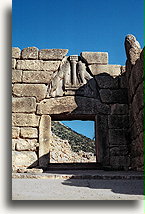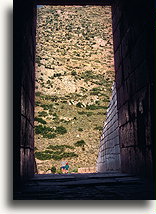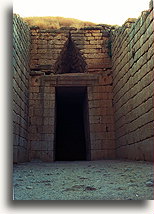


Fortified palace of Mycenae on the Peloponnese peninsula (Greece) was a center so-called Mycenaean culture in the period from approx. 1,600 to 1000 BC. Extensive commerce made the Mycenaean goods were known throughout the Mediterranean. For Mycenaens contact with Minoan Crete played a crucial role in the development, especially in the arts. But Mycenaeans, who are considered the first Greeks, were mainly warriors, and achieved their biggest accomplishments through the warfare rather than trade. They left behind a long lasting impact in Europe. The palace in Mycenae and King Agamemnon, who led the Greeks in the Trojan War, inspired epics of Homer. Many centuries later the tomb of Agamemnon left strong impression on Polish poet Juliusz Slowacki who wrote in his poem:
“Let my magically strung lute
Resound more gloomily and more darkly,
For I have entered Agamemnon's tomb,
And I sit quietly in the underground dome
Caked in the blood of the cruel Atreides?
My heart is asleep, but still it dreams. How sad I am!” *
* Translated by Catherine O'Neil




